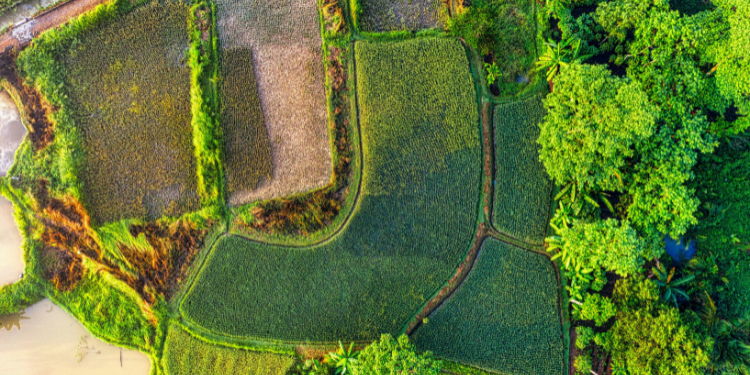S2MP
Sentinel-1/Sentinel-2-derived Soil Moisture Product at plot scale: an operational approach for the retrieval of soil moisture values at plot scale using the neural network (NN) was first developed in 2017 by El Hajj et al. [1]. To train the NN, a synthetic database of the C-band SAR (Synthetic Aperture Radar) backscattering coefficients in the VV polarization was generated by coupling the Integral Equation Model modified by Baghdadi et al. [2] (IEM-B) and a parametrized Water Cloud Model (WCM) [3]. The synthetic database was generated over a wide range of soil and vegetation conditions (soil moisture between 2 vol.% and 40 vol.%, incidence angle between 20° and 45° and NDVI between 0 and 0.8). A noise was then added to the simulated SAR signal to make them closely approximate to the real SAR (Synthetic Aperture Radar) observations. Finally, the synthetic data was divided into training and validation sub-datasets. A first validation study of the trained NN using real in situ data collected over a study sited located near Montpellier city (south France) provided soil moisture estimation with a RMSE of 5.5 vol.%.
The approach for the operational soil moisture mapping (S2MP) uses the neural networks (NN) technique to invert the radar backscattering signal [1]. The development of the inversion method consists of the following steps:
- Generate a synthetic database of backscattering coefficients using a parameterized WCM [3] combined with the modified IEM-B [2]. The WCM used was parameterized using a wide range of soil moisture values (between 4.0 and 39.7 vol %), surface roughness (between 0.7 cm and 4.6 cm), and NDVI (between 0.08 and 0.86), all of which were obtained from agricultural fields (mainly cereals).
- Noise the synthetic SAR C-band database and NDVI values to obtain synthetic database close to the real SAR and NDVI data;
- Train and validate the neural networks using the synthetic dataset;
- Finally, apply the trained neural networks to Sentinel-1 (S1) and Sentinel-2 (S2) images to map the soil moisture.
Incidence angle, noisy radar signal at VV polarization, and noisy NDVI are the inputs of the NN. The soil roughness (root mean square surface height “Hrms”) was not used as an input parameter for the neural networks training and validation. The NN was trained using the Levenberg-Marquardt algorithm with two hidden layers. The number of neurons for each hidden layer is 20. Linear and tangent-sigmoid transfer functions were associated with the first and second hidden layers, respectively.
The developed algorithm is currently used in operational mode on many study sites (http://www.theia-land.fr/en/thematic-products).
No datacube available for this model.
WCM: Water Cloud Model
IEM_B: Integral Equation Model modified by Baghdadi et al.
Dubois_B: Dubois model modified by Baghdadi et al.
Hrms: Root mean square surface height (soil roughness parameter)
θ: Incidence angle
NDVI: Normalized Differenced Vegetation Index
λ: Radar wavelength
k: Radar wave number (=2π/λ)
RMSE: Root Mean Square Error
SAR: Synthetic Aperture Radar
mv: Surface Soil Moisture
HH: Horizontal-Horizontal polarization
VH: Vertical-Horizontal polarization (VH=HV)
VV: Vertical-Vertical polarization
σ^0: Sigma naught backscatter
[1] El Hajj, M.; Baghdadi, N.; Zribi, M.; Bazzi, H. Synergic Use of Sentinel-1 and Sentinel-2 Images for Operational Soil Moisture Mapping at High Spatial Resolution over Agricultural Areas. Remote Sensing 2017, 9, 1292, doi:10.3390/rs9121292.
[2] Baghdadi, N.; Abou Chaaya, J.; Zribi, M. Semiempirical Calibration of the Integral Equation Model for SAR Data in C-Band and Cross Polarization Using Radar Images and Field Measurements. IEEE Geosci. Remote Sensing Lett. 2011, 8, 14–18, doi:10.1109/LGRS.2010.2050054.
[3] Baghdadi, N.; El Hajj, M.; Zribi, M.; Bousbih, S. Calibration of the Water Cloud Model at C-Band for Winter Crop Fields and Grasslands. Remote Sensing 2017, 9, 969.
